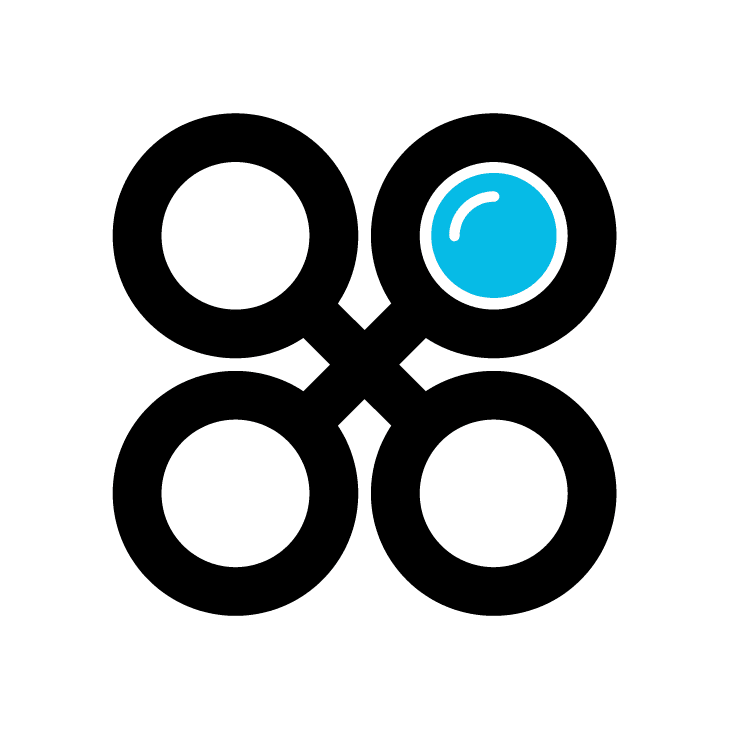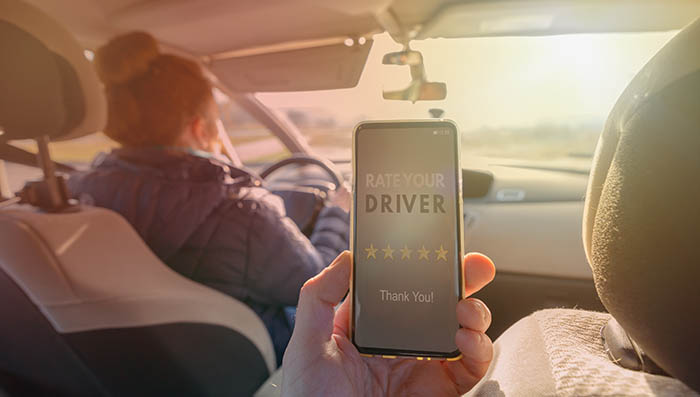Millions of people, by choice or circumstance, take advantage of the sharing economy, an economic model based on peer-to-peer sharing of goods and services. Some of the largest contributors and most well-known players in this game are companies that offer ridesharing, short-term accommodation, and, more recently gaining traction, healthcare, all through an online platform. And all, by offering a differentiated user experience and creating a seamless user interface, can better appeal to their users and pull ahead of their respective packs.
Ridesharing: Getting on board with UX
SITUATION: Ridesharing services, such as Lyft and Uber, have disrupted and redefined an industry once dominated by the taxi. Ridesharing services are convenient and affordable. These services rely equally on riders and drivers, creating a shared sense of choice and contol.
Uber, Lyft, and others like them are shaping the future of transportation. As they grow, they must evolve to meet the needs of both drivers and riders. User experience testing plays a critical role in keeping these services safe, convenient, and social while making them easy to use and inviting for new users.
WHITE SPACE: UX research and design can help with the features and design of the mobile app, making the GPS more usable, or even the design of the car itself. For example, if a user has grocery bags with them, can the car be developed for a more adaptable interior? Currently, Uber and Lyft drivers need to own or lease a car to be a driver. Could finding a way to allow people who do not own cars to become drivers create improved experiences for a new employee population?
Perhaps the greatest white space where UX can impact this industry is expansion of the service offering beyond driver and rider to areas such as food delivery to urban delivery, freight transportation to autonomous driving. For success, all of these involve a multitude of new touchpoints that have entirely new mental models and user needs that Uber and Lyft could help address by talking with their drivers and riders.
Hospitality: Building an exceptional user platform for hosts and renters
SITUATION: The sharing economy is also redefining the hospitality industry. Hotels, once the most viable option for travelers seeking short term stays, must now compete with Airbnb’s unregulated, sometimes untaxed, and often more flexible options. A 2019 study by Florida State University found that Airbnb’s exponential growth has contributed directly to a decrease in room prices and revenue in both luxury and midscale hotels.While hotels sometimes provide security, pools, fitness centers, and restaurants that are not often found in Airbnb listings, the cost per square foot is generally lower in AirBNB locations, appealing to travelers who don’t need traditional hotel amenities. The FSU study also found that travelers are showing an increasing demand for authenticity in lodging, which threatens hotel chains that sometimes don’t offer localized interactions and can feel too familiar to travelers hoping for new experiences.
GRAB MARKET SHARE: As with all peer-to-peer sales platforms, Airbnb offers only the tools and services to connect hosts to consumers. They rely on their hosts to provide consistently high-quality experiences during the consumer’s actual stay, making it particularly important for platforms like Airbnb and its competitors (eg, HomeAway, Vrbo), to provide excellent tools. These platforms must make the consumer comfortable and offer ample opportunities to provide feedback, which can be integral to identifying issues that could negatively impact the company’s brand. They must also provide tools to protect their hosts and give them the opportunity for success, ensuring they will not abandon the platform for an easily accessible competitor. All of this leads to building trust.Exploring the needs and expectations of both the hosts and renters through UX research is key to building that ideal platform that will stand out and grab market share and, ultimately, retain customers.
Healthcare: Understand the gaps of the industry
SITUATION: The healthcare industry is attempting to infiltrate the popular sharing economy. Instead of having to go to a doctor’s office, patients now have the option to receive healthcare in the comfort of their own home.Companies like Heal, which offers on-demand, house-call doctors starting at $99/hour, and Crowdmed, a crowdsourcing platform where users can receive help to diagnose unresolved symptoms from a pool of those with knowledge or experience with similar symptoms and healthcare professionals, are providing patients with easily accessible resources. The sharing economy goes beyond patients as well. Apps like Cohealo facilitate the sharing of healthcare equipment and technology between hospitals and healthcare facilities.
CHALLENGES:
There are multiple challenges in the healthcare sharing industry that may not be present in other industries. Users tend to be forgiving if their driver is late or if the home they rent is not clean. However, users hold healthcare to a higher standard.
- Patient trust: In the healthcare industry, trust is particularly important. Users need to have trust in the doctors providing the services and that their healthcare information will be safe. Additionally, if a healthcare provider misses an appointment or prescribes an ineffective medicine, users may not be likely to use the service again. The challenge for the business (app/platform provider) is to build systems that cater to patients with this factor in mind.
- Provider flexibility: The flexibility of providing services through a shared economy app may help draw healthcare providers to try it as an alternative or an addition to traditional in-office or in-hospital services. Facilitating this relationship between the provider and the business and ensuring that the flexibility offered by the app meets providers’ needs will be imperative to retention.
- Payer experience: Another challenge for these businesses is the ease of billing and payments. When health insurance companies are introduced to the equation it adds a layer of complexity; the design must incorporate the needs of a third user group.
DESIGN TO FILL THE GAP: User research will help this growing industry learn exactly what needs must be addressed in the existing healthcare services space. What are users comfortable doing in their own home vs what do they think absolutely must be done in an office setting? What makes them feel that way? How can that gap be closed?
Ultimately, due to the digital nature of the sharing economy, there is an opportunity for service providers to stand out with a great UX. And because trust is huge factor of success when it comes to these platforms, keeping all user groups involved in the development process will only increase that trust and help to build products that users can use seamlessly, safely, and effectively.



